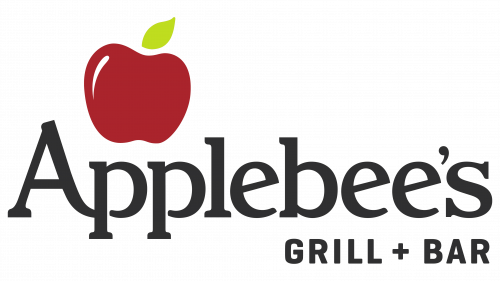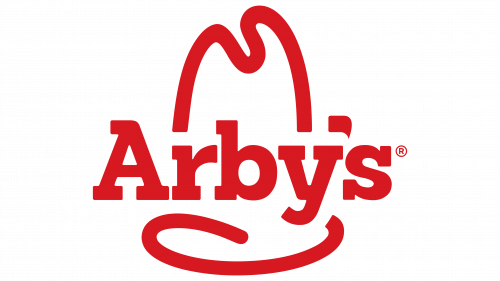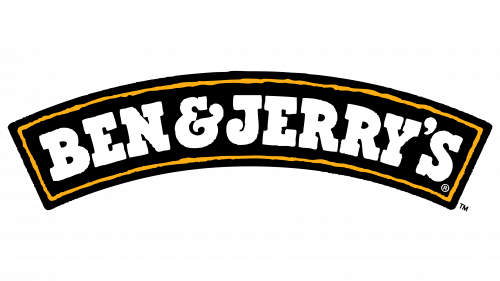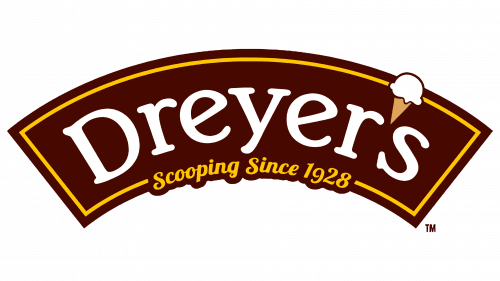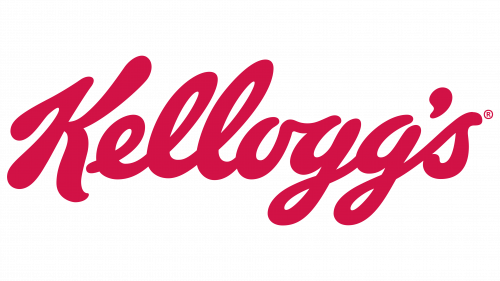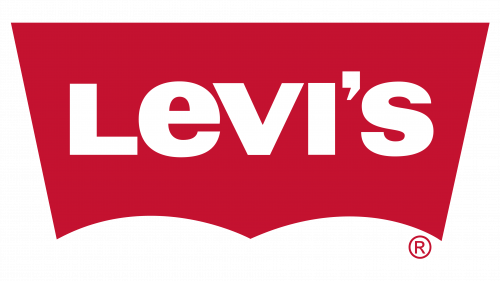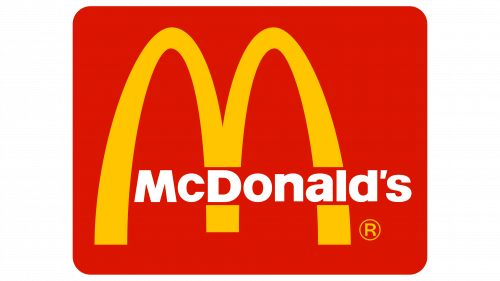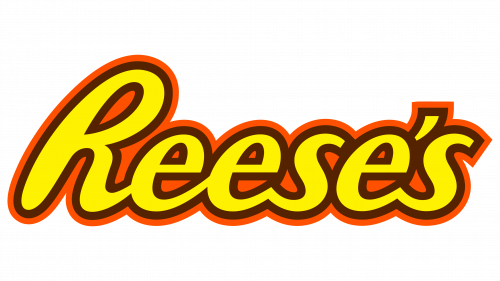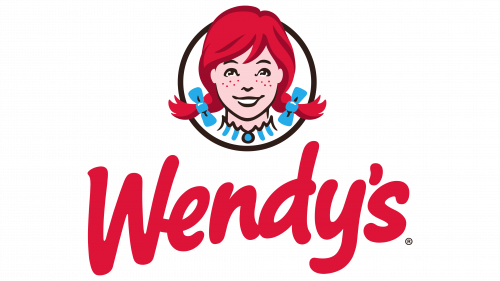The use of apostrophes in brand logos has declined, especially in recent times. This is due to the fact that company executives are looking to simplify the visual elements of their brand. Often, simplified graphics and text are favored because they are easier to reproduce across a variety of media.
The shift to digital commerce and online interaction poses particular challenges for brand names that use apostrophes. People searching for products or services online often overlook the correct grammatical elements in their search queries. This oversight makes it difficult to find companies with apostrophes in their name through search engines.
The use of this punctuation mark serves as a unique visual element that sets the brand apart from its competitors. In some cases, the use of an apostrophe can give a brand’s image a twist or sophistication.
What brands use an apostrophe in their name?
Apostrophes serve many functions in the English language, but they can be a source of confusion. Incorrect usage can spark critical discussions among consumers and tarnish a brand’s reputation. Businesses have recognized these complexities and potential pitfalls, and as a result, some have eliminated the use of apostrophes in their names and logos. For example, a financial organization formerly called “Barclay’s” removed the apostrophe after separating from its founding family.
Brands that use apostrophes often do so for two main reasons. The first reason has to do with indicating affiliation or association. For example, a family-owned business may use an apostrophe to indicate a connection between the business and the founding family. The financial organization Barclay’s once used an apostrophe to show family affiliation, although this is no longer the case.
A second common reason for using an apostrophe in brand names is to replace missing letters, often to create an informal or conversational tone. This tactic is especially popular among companies targeting a youth audience. An example is Dunkin’, where an apostrophe replaces the missing “g” in the word “Dunking,” giving the brand a more casual and friendly tone.
These punctuation marks carry nuanced semantic or stylistic implications for those looking to stand out from competitors or convey a particular message.
Famous brands with apostrophes in their logos
For many companies, maintaining an apostrophe is a matter of staying true to the principles of proper grammar. This approach is attractive to those who value precision in language and can even lend authenticity or authority to a brand. Companies using this approach have a long history or want to project an image of being scholarly and serious.
Another reason why some companies keep the apostrophe in their logo is to create an image of elegance or sophistication. For these companies, the apostrophe is not just a grammatical necessity; it becomes an integral part of the brand’s personality. This stylistic choice often resonates with consumers who appreciate detail and nuance in branding, making the company stand out in a crowded marketplace.
Well-known companies use apostrophes in their logos to enhance their brand image and personality. They have to face the challenges posed by the digital age in particular. Missing or misplaced apostrophes in search queries can make these companies less accessible online.
Applebee’s
Logos with apostrophes are particularly common in the fast food and catering industry. Founded in 1980, Applebee’s has risen to prominence in American restaurant culture.
The logo has a simple yet impactful design and consists of a word mark typed in a sans-serif font. The letters “A” and “P” in the word mark are linked together, which promotes unity and cohesion.
Although the apostrophe in Applebee’s wordmark is small and easy to miss, it plays a crucial role in brand building. This small punctuation mark subtly emphasizes the possessive nature of the brand name, thus personalizing the food it offers.
Further enriching the visual language of the logo is the image of a large apple. This graphic element performs a double function: it reinforces the brand name and, at the same time, adds color and creativity to the overall design. The apple symbol simultaneously represents freshness and quality – characteristics that are highly valued in the restaurant business.
Arby’s
Founded in 1964 by the siblings, Arby’s has grown into the dominant fast-food restaurant chain in the United States and around the world. The company’s name comes from a figurative play on the initials of its founders, the Raffel brothers, which phonetically sound like “Arby’s.” This innovative approach to naming sets the brand apart and makes it instantly memorable.
The use of the apostrophe in Arby’s logo serves a dual purpose. First, it is a tribute to the creators, symbolizing their continued influence and affiliation with the company. Secondly, it adds a unique touch to a recognizable brand, reinforcing its distinctive features. Another eye-catching element of the logo is the large stylized hat behind the brand name. This image points to the company’s menu, which differs from standard fast food options and features a variety of Texas and Western dishes.
The hat, in particular, evokes images of the American West, which is consistent with the brand’s culinary focus and sets the stage for the gastronomic experience that customers expect. It serves as a visual cue that brings to mind hearty, rustic food, which implicitly shapes consumer expectations and emphasizes the brand’s unique position in the fast food sector.
Ben and Jerry’s
Born out of the entrepreneurial spirit of Jerry Greenfield and Ben Cohen in 1978, Ben & Jerry’s has become a dominant force in the ice cream and confectionery sector. The company’s name is directly borrowed from the surnames of its co-founders and, like many other brands in the industry, uses an apostrophe to indicate this connection.
Ben & Jerry’s logo is visually appealing and evokes positive emotions. Made in the form of a curve resembling a smile, a rainbow, or even a sunrise, it evokes thoughts of happiness and optimism. This design decision was made on purpose to convey the whimsical and delightful nature of the ice cream offered.
Beyond the simple design elements, the choice of font in the Ben & Jerry’s logo deserves special mention. The artistic and decorative typeface speaks to the ingenuity embedded in the company’s core ethos. This ingenuity is reflected in the wide range of unique and often exotic ice cream flavors that have captivated taste buds around the world.
Chili’s
Established in 1975, Chili’s Bar and Grill has made its mark on American cuisine, offering a diverse menu to diners across the country. The logo of this widely recognized restaurant uses an apostrophe, but the approach is not quite conventional.
The apostrophe was originally integrated into the logo as part of the chili shape. This innovative use of punctuation served as a clever visual play on the restaurant’s name and symbolized its focus on spicy and flavorful cuisine.
Recently, the brand decided to update its visual style. The apostrophe now serves as a stem for the chili image, a detail that pays tribute to the restaurant’s name and its culinary offerings. This visual element is accompanied by the letter “S,” depicted in a bold green sans-serif font.
This shade of green complements the image of the red Chili, effectively conveying the vibrant and energetic atmosphere that Chili has at the restaurant. The choice of font, namely sans-serif, conveys a modern atmosphere, which is in line with the brand’s desire to be perceived as modern and relevant.
Denny’s
Debuting in 1953 as a humble coffee and donut shop, Denny’s has grown into one of the world’s leading snack chains. Although the establishment was the brainchild of Harold Butler and Richard Jezak, it’s interesting that the brand’s logo doesn’t pay homage to its founders. The apostrophe in the brand name serves a purpose – it conveys a sense of ownership, which is a common practice in branding, especially for fast food chains.
Visually, the Denny’s logo is far from ordinary. It uses a lively, stylized font that seems almost animated, creating an impression of lightness and dynamism. This design choice seems to convey the very spirit of Denny’s, an establishment known for its relaxed, welcoming atmosphere.
Dippin’ Dots
Founded in 1988 by Kurt Jones, Dippin’ Dots has become an iconic frozen treat, widely recognized in the United States and distributed in 14 countries around the world. The unique ice cream is made by rapidly freezing the ice cream mixture using liquid nitrogen. This method preserves the flavor and gives Dippin’ Dots ice cream a special texture that distinguishes it from regular ice cream.
The name of the brand “Dippin’ Dots” was not chosen by chance; it reflects the properties of the product. By omitting the “d” in the word “Dipping,” the name takes on a casual, disposable tone. This choice is in keeping with the brand’s desire to appear approachable and fun. In combination with the apostrophe, the apostrophe serves a special function: it increases brand recognition. The apostrophe gives the name an informal character, which further contributes to the image of accessibility.
The bright shades of teal and orange create an atmosphere of youthfulness and attractiveness. Elements of branding also apply to the visual design of the logo. These bright colors attract attention and echo the playful nature of the product. They complement the pleasant taste of the snack, creating a comprehensive branding strategy.
Dreyer’s
Founded in 1928 by Joseph Edy and William Dreyer, the Dreyer’s ice cream brand has earned enduring recognition. What sets this brand apart is its unique two-pronged approach to naming. “Edy’s” and “Dreyer’s” are the brand’s official names, incorporating possessive apostrophes as marks of ownership and originality.
Dreyer’s logo design also takes an innovative approach to the use of the apostrophe. Instead of serving a grammatical function, the apostrophe in the logo is artistically stylized to look like an ice cream cone. This creative approach gives the brand a quirky touch, making it memorable and instantly recognizable.
The visual elements further reinforce the brand’s heritage. The traditional serif font in the logo conveys a sense of heritage and timelessness, indicating the brand’s long-standing presence in the ice cream market. The brand name is accompanied by a gold and brown banner, colors that are often associated with wealth and tradition.
Dunkin’
The Dunkin’ Company was founded in 1950. Bill Rosenberg has grown into a dominant name in the quick-service restaurant sector in the United States. Originally known as Dunkin’ Donuts, the brand has a history of adaptive and elegant logo design. The latest change was the epitome of minimalism: the “Donuts” part disappeared from the logo to focus on the company’s broader offerings.
The presence of the apostrophe in the logo is a unique design decision. Unlike most other brands that use an apostrophe to indicate affiliation or origin, Dunkin’s apostrophe serves a functional purpose: it replaces a letter. This makes it a grammatical marker and a thoughtful design element. The apostrophe is in a different color, which makes it stand out from the rest of the word mark and makes it a focal point.
One of the main reasons for shortening the original name and moving to a more minimalistic approach was to emphasize the versatility of the brand. By dropping the “Donuts” label, Dunkin’ expanded its potential customer base by showing that it offers a variety of products beyond just donuts. The brand shift addresses consumers’ ever-changing preferences for a variety of quick-service options, from coffee to sandwiches.
Dunkin’ successfully navigated the complexities of rebranding while retaining the core elements that make it recognizable and beloved.
Hershey’s
The multinational Hershey Company has firmly established its place in the American market, offering not only chocolate but also a wide range of baked goods and beverages. It is often referred to as America’s premier chocolate brand, and this iconic status is reflected in its name and brand choices.
The company originally incorporated an apostrophe into its logo, presented as a catchy and strong word mark. This element was not only a stylistic decision but also a testament to the company’s historical roots, symbolizing ownership or ancestry, such as Hershey’s entry into the world of sweets and treats. Over time, the apostrophe was eliminated from the visual identity. The reasons for this change are not explicitly stated, but they are consistent with a broader trend toward simplification and ease of memorization among consumers.
The absence of the apostrophe in the logo does not invalidate its presence in the official company name. It still has meaning, connecting to the brand’s heritage and founder Milton Hershey. Despite the logo’s visual absence, its conceptual significance remains: it serves as an anchor to the past while the brand navigates the complexities of today’s market dynamics.
Kellogg’s
In the logo of the company, founded in 1906 by Will Keith Kellogg, the apostrophe serves as an indication of ownership and pedigree. It’s a subtle but strong way to connect the brand to its founder.
Kellogg’s logo is not just a name but a complex word mark in a font that resembles a handwritten signature. This design choice gives the brand personality and humanity. At the same time, the logo exudes a certain upscale feel, subtly hinting at luxury. These carefully calibrated design elements aim to appeal to a wide range of consumers, primarily families.
The inclusion of the apostrophe in Kellogg’s logo plays a dual role. On the one hand, it serves as a subtle historical marker to remind us of the company’s origins. On the other hand, it complements the typeface, forming a cohesive visual message about the brand’s values: a combination of tradition, luxury, and concern for family well-being.
The decreasing use of apostrophes in logos is often attributed to the development of the digital marketplace. Internet search algorithms and social media tags have become less receptive to special characters, pushing brands to simplify. Many companies have begun to question the use of grammatical elements such as apostrophes, especially when the primary goal is to maximize online visibility. For a company like Kellogg’s, the apostrophe remains a distinctive element that reflects its historical roots and modern aspirations.
Kohl’s
Kohl’s, founded in 1962 by Maxwell Kohl, has become the dominant department store conglomerate in the United States. With more than 1,100 stores, the retail chain has a presence in nearly every state except Hawaii. The company was originally a modest corner grocery store in Wisconsin but has since expanded significantly.
The apostrophe in Kohl’s logo serves a dual function: it acknowledges the company’s family origins and is a subtle nod to community values. In particular, the rounded design of the logo is meant to convey a sense of inclusivity and warmth, making it understandable to a wide range of consumers.
Typed in a black sans serif font, the word mark exudes boldness and confidence. This font choice complements the simplicity and straightforwardness of the branding, qualities that resonate with the psyche of the American consumer. The black font, while simple, creates a sense of authority and reliability, which is important for a retail giant with such a broad scope of operations.
Land O’ Lakes
Founded in the United States in 1921, Land O’ Lakes has become a dominant force in the dairy sector, producing approximately 12 billion pounds of milk annually. The company’s ranking among the world’s leading agricultural cooperatives is a testament to its continued relevance and influence.
The company’s logo uses an apostrophe instead of an “F” in the word “Of” to create an air of accessibility and friendliness. This seemingly insignificant detail shows the thoughtfulness of the decision to attract consumers to the market.
In addition to the apostrophe, the design elements of the logo are also thoughtful. A modern aesthetic is achieved through the use of block typography. The deep gray color scheme creates a sense of sophistication and professionalism, which is important for a brand associated with food production and distribution, where public trust is paramount. To create the corporate identity, the logo uses the suffix “Inc,” short for incorporated. This addition is a subtle hint at the official business structure of the company.
Levi’s
Originating in 1853 as an American clothing company, Levi’s has established a reputation for producing the highest quality jeans. The company now spans the globe, extending its influence to numerous international regions. The logo of this global brand is an important component that combines simplicity with a bold visual identity.
The emblem, known as the “bat wing,” features a rectangular shape, culminating in two curved lines at the bottom. This design is a powerful graphic image that catches the viewers’ attention. The wordmark font is of significant size and blocky in nature, directly reflecting the brand’s resilience and confidence. These qualities are not just a byproduct of a design whim but were carefully chosen to convey the brand’s commitment to durability, especially considering that denim was originally created to be durable.
As for the apostrophe in the Levi’s logo, it serves a dual function. It serves a grammatical function, indicating affiliation while at the same time tipping its hat to the brand’s founder, Levi Strauss. It subtly conveys that this brand has a story to tell and that it builds on a legacy of quality and innovation.
Lowe’s
Founded in 1921 by Lucius Smith Lowe, Lowe’s Companies Inc. has grown into a major American retailer specializing in home improvement products and services. The brand’s logo often features an apostrophe, which is directly related to the company’s founder’s affiliation and heritage. This grammatical element serves as a stylistic and symbolic homage to Lucius Smith Lowe’s, giving the brand authenticity and historical validity.
A notable part of Lowe’s branding is the color scheme consisting of white and blue. These colors are commonly associated with trust and reliability and play an important role in shaping the public’s opinion of the brand.
Another layer of brand perception is the house-shaped graphic behind the brand name in the logo. This design element serves as a visual cue, directing the customer’s attention to the company’s core business of home remodeling and do-it-yourself (DIY) projects. All design elements, from the apostrophe to the color scheme to the shape of the home, come together to form a unified corporate identity.
Macy’s
Macy’s is an interesting specimen in the annals of brand logos imbued with apostrophes. Unconventionally, the company abandons the apostrophe, replacing it with a star. This adaptation is not just a quirk but an embodiment of the core symbol of a company that has specialized in retail and apparel since its founding in 1858.
Having become one of the titans of the American department store, Macy’s has firmly entered the national consciousness. Over the course of its existence, the brand has undergone many changes to its visual identity. The modern logo, adorned with not one but two stars, emphasizes the brand’s values of excellence and superior quality.
Beyond retail, Macy’s navigates the complex world of consumer perception. When people see a star on the logo, what comes to mind is not just a department store but an entire experience associated with quality, variety, and customer satisfaction. Going beyond the traditional concept of ownership, Macy’s uses the star to express a broader message. The star resonates on many levels, serving as a multifaceted symbol.
McDonald’s
The presence of an apostrophe in a brand name is often more than just a grammatical necessity. For example, fast food giant McDonald’s originally included an apostrophe in its logo to signify the company’s affiliation, dating back to its founder, Ray Kroc. This small punctuation mark emphasizes the brand’s origins and heritage, giving it an authentic feel.
Over the course of its existence, the McDonald’s brand has undergone many changes. Most notable has been the shift from emphasizing the full name to emphasizing the iconic “golden arches.” This evolution reflects a shift in branding priorities. Whereas the apostrophe played an important role in cementing the brand’s connection to its founder, the emphasis later shifted to universal recognizability, aided by the simple but striking design of the golden arches.
Reducing the number of apostrophes in McDonald’s branding solves a practical problem as well. The presence or absence of an apostrophe has caused confusion for years. The lack of clarity may have negatively impacted brand recognition and memorability, two critical aspects in today’s rapidly changing consumer environment. The move to a universally recognized “golden arch” symbol has eliminated these differences.
Reese’s
Founded in 1928 and now a subsidiary of the Hershey Company, Reese’s brand has established its position in the sweets sector, especially thanks to its unique combination of chocolate and peanut butter. In memory of H.B. Reese’s, the brand’s creator, the name features an apostrophe to indicate ownership and heritage.
The Reese’s logo uses a thoughtful color scheme of brown, yellow, and orange. The brown hue directly references chocolate, the main ingredient in many of the brand’s products. The yellow and orange tones lend vitality and appeal – emotions that arise in the consumer when eating sweets.
Special attention should be paid to the font style used in the logo. Its slightly italicized form is reminiscent of a handwritten signature, which gives the image individuality and authenticity. This font choice subtly emphasizes the brand’s historical connection to its founder, H.B. Reese’s, while evoking a sense of nostalgia, which is a powerful tool in the competition for candy production.
Trader Joe’s
The apostrophe in the Trader Joe’s logo has a meaning that goes far beyond simple grammatical correctness. This American grocery chain, founded in 1958, intentionally used this punctuation mark to add depth to its brand. The apostrophe indicates affiliation, linking the stores directly to their founder, Joe Coulombe. This subtle detail gives the brand a sense of authenticity and family orientation, which is in line with Coulombe’s original vision for a family-oriented grocery store.
The Trader Joe’s logo itself is an exercise in strategic visual communication. Using a stylized serif font, the brand aims to appeal to a broad demographic while looking fun and entertaining. Font choice is not just about aesthetics; it conveys the character of the brand, reinforcing its accessibility and broad appeal.
Brand color choices are never random, and Trader Joe’s is no exception. The use of the color red serves multiple purposes. In color psychology, red often symbolizes passion, energy, and urgency. When consumers see this color, it stimulates not only the eyes but also certain emotions and reactions. By evoking passion and a sense of urgency, red is an effective way to attract customers to the grocery store. After all, groceries are often purchased out of necessity, but with effective branding, you can turn the shopping process into something more emotionally intense. Distinguishing ownership with apostrophes is common for family-oriented businesses, especially in retail.
Wall’s
Wall’s, founded in 1922 by Richard Wall, is a key player in the UK frozen desserts and ice cream market. The brand’s logo uses an apostrophe, a common practice in brand nomenclature, which serves as a reference to its founder and denotes ownership. Under the Unilever umbrella, the brand has expanded its range to include Mr. Whippy’s soft-serve ice cream mixes, enriching its already diverse product portfolio.
The Wall logo plays a dual role: it is a company identifier and embodies brand attributes. Consisting of a word mark and a symbol resembling a swirling heart, the logo conjures up an image of soft-serve ice cream spiraling into a bowl. The shape of the swirling heart serves several purposes: it demonstrates emotions such as compassion and love while also evoking memories associated with the soft-serve ice cream treat.
Wall’s strives to offer not just a frozen treat but an experience filled with warmth and happiness. This experience extends from the first glimpse of the logo to the last scoop of ice cream. The logo resonates with customers, effectively articulating the company’s core values without the use of words. Over the years, Wall’s has established a strong foothold in the frozen dessert industry, thanks in part to its trusted branding.
Wendy’s
Established in 1969, Wendy’s has become iconic in the fast food industry, and its logo is part of that fame. Named after the nickname of the founder’s daughter, the brand uses an apostrophe to signify ownership and family heritage. The logo showcases not only this grammatical symbol but also other design features that give it a layered meaning.
A key attribute of the logo is the portrait of “Wendy,” which captures the essence of family life. The presence of this heroine’s image personalizes the brand, making it more understandable to consumers. A closer look reveals a barely visible formation in the collar, reminiscent of the word “mom.” While not explicitly advertised, this subliminal message reinforces the brand’s focus on family and quality homemade food.
The careful integration of these various design components takes the brand beyond just another fast food establishment. Through the thoughtful use of colors, shapes, and typography, Wendy’s has successfully created a brand identity that evokes an emotional response. The Wendy’s logo plays an important role in embodying the brand’s message of family, quality, and a touch of home in its fast food offerings.
Is it advisable to use apostrophes in logos?
Using an apostrophe in a logo or brand name is not just a grammatical exercise but often a subtle way of communicating a brand’s origins, ethos, and market positioning. In this context, apostrophes act as versatile elements of brand linguistics, performing functions beyond those traditionally expected of punctuation marks.
For example, the stylistic decision to omit a letter and replace it with an apostrophe is characteristic of brands such as Dippin’ Dots and Dunkin’. This nuance often creates an air of informality and youthfulness, which is particularly appealing to younger segments of the population. The casual naming style allows for a departure from traditional norms and ties the brand to a modern, casual sensibility.
In other cases, such as the Chili’s and Dreyer’s brands, apostrophes are creative elements of the logo. They become an integral part of the brand’s visual language, adding quirky or engaging touches that make the logo memorable and visually appealing.
The apostrophe is not without its branding challenges. To draw attention to this miniature punctuation mark requires careful design consideration. In addition, there is the problem of ambiguity in spelling. The presence of an apostrophe can lead to common misspellings or interpretations, especially for those who are unfamiliar with proper brand spelling.
The Impact of Apostrophes on Brand Logos
The use of apostrophes in a brand logo has many functions – from emphasizing the historical context to adding a stylistic twist that attracts attention. This punctuation mark can become a narrative tool that conveys information about the origin and purpose of the brand.
If chosen wisely, the apostrophe can improve the brand image and positively influence its perception of the audience. For example, it can denote the name of the founder or a person who was instrumental in the formation of the company, adding an element of heritage and credibility. It becomes more than just a grammatical necessity; it becomes a historical reference, subtly capturing the brand’s heritage in the public consciousness.
Another use of the apostrophe is to make it original and unique. It can give a brand a fresh and youthful feel, as evidenced by brands such as Dippin’ Dots and Dunkin’. This element of modernity and informality tends to resonate with younger consumers, offering a stylistic approach that subverts conventional naming protocols.
The decision to include an apostrophe should be taken seriously. This symbol may seem simple, but its impact can be profound. Inappropriate use can cause confusion, lead to common misspellings, or reduce brand credibility.
When making these difficult decisions, it is often a good idea to consult professionals in the field of name and logo design. Expert advice can help you understand the challenges and opportunities associated with adding an apostrophe. Proper planning and consideration of the pros and cons can result in a strong, cohesive brand identity that leaves a lasting impression for the right reasons.

